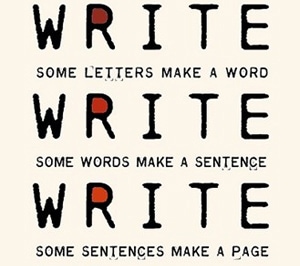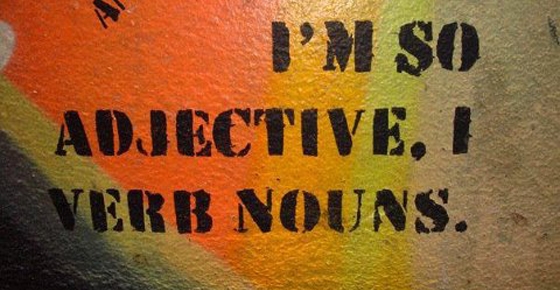
When it comes to writing persuasive copy, smart writers know that the devil is definitely in the details.
Doing things correctly requires testing, testing, and more testing, but also a bit of inspiration (so that you have ideas on what to test).
Today, I’m offering up some scientific research on the latter, presenting 5 academic studies on copywriting + persuasion that you can implement and test in your copy.
While I slogged through research papers to find these insights, you won’t need to waste nearly as much time, because it’s all presented in laymen’s terms that you can quickly read and evaluate.
Let’s dig in!
1. The “But You Are Free” Technique
When it comes to writing persuasive copy for your site, I’ve discussed before how walls of text can be conversion killers, even if longer landing pages tend to result in more qualified leads.
Since it is a delicate balance, and since copywriting usually revolves around making concrete statements and offers, you might be quite surprised at the results of this new study — one that tells you to lengthen your copy and reminds people of their free will!
This recent research (2013) examined over 42 separate studies where a single technique was used, resulting in a combined 22,000 subjects from which the data was gathered.
In these separate studies, researchers tested the effects of reminding people of their freedom to choose when presented with a persuasive option. By reaffirming the subject’s freedom, researchers found that the subjects felt less threatened about making a choice.
This resulted in a few interesting findings…
People have been shown to donate more to good causes, agree more readily to a survey and give more to someone asking for a bus fare home.
What’s even more interesting: According to the researchers, the “idea” of implying a reader’s freedom to choose was far more important than the actual words used.
So, between phrases like:
- “But obviously do not feel obliged…” (and)
- “But you are free to…”
…there was no difference in performance.
There are, however, some problems: While the technique doubled the success rate of persuasive attempts in-person, the effects were less pronounced for when attempts were made over the web (the researchers specifically tested email).
What’s this mean for you?
As always, it means if you implement this copywriting technique into your sales pages, you need to closely test the results to see what impact it has on your conversions.
One interesting point that I’d love to see addressed is whether or not the “in-person” advantage is negated when people are watching a video… does using this technique over video simulate a real life one-on-one?
2. Copywriting for Spendthrifts and “Tightwads”
No matter what industry you are selling in, the research tells us that every small business owner is going to have to deal with 3 types of customers.
Neuroeconomics experts have shown us that these 3 customer types are formed through their ability to withstand buying “pain,” and grouped by when their brains decide enough spending is enough.
The 3 Types of Customers
According to research at Carnegie Mellon University by George Lowenstein, the human brain is wired to “spend ’til it hurts”, meaning that we base our purchasing decisions on the buying pain we feel after comparing price vs. utility.
Additional studies from the Wharton School of Business have showcased how this impacts customers at large. Generally speaking, due to this buying pain phenomenon, customers get separated into 3 distinct groups:
- Tightwads (24%) – those who feel buying pain at lower than average prices
 Unconflicted (61%) – those who experience average buying pain
Unconflicted (61%) – those who experience average buying pain- Spendthrifts (15%) – those who feel buying pain at higher than average prices
As you can see, although “normal” spenders still make up a large amount of your customer base, around 39% of customers are going to be outliers in a sense, with buying patterns different from the norm.
With such a large percentage of people falling into these categories, it’s important to know how to sell to these folks and figure out just what they want to hear from your copy so that you won’t be leaving sales on the table.
Selling to Spendthrifts
For those folks with the unusually low sensitivity to buying pain (almost exclusively found in luxury markets), it’s a given that they ought to be quite easy to sell to, right?
Right, but no sale is guaranteed, so it’s important to optimize certain aspects to avoid having these customers go over to competitors (remember, they have less of a problem spending money, but that doesn’t mean they want to buy from you).
What can entrepreneurs and marketers do?
A: Emphasize hedonistic tendencies
While “tightwad” buyers tend to focus more on “utilitarian” tendencies (what utility they get out of the product), spendthrifts are often just as concerned with how the purchase makes them feel.
In one study on back massages, researchers tested pitching the massage through 2 different contexts:
- As a relief to back pain
- As a pleasurable experience & a stress reliever
Spendthrifts responded to the second option (the one focused on pleasure) 103% more often than tightwads (although both responded favorably to the utilitarian one).
B: Focus your copy on the ease of purchasing
Spendthrifts have been shown to be far more likely to utilize credit cards, which makes sense: they want satisfaction instantly, and aren’t as concerned with the cost.
The difference in the two groups in this instance is that tightwads hate multiple purchases, which is also the reason why they prefer bundling: making payments means separate (and recurring) pain points, spendthrifts care far less about these.
Since deferring and spreading out buying pain is less likely to affect spendthrifts, they will be more interested in hearing about payment plans and other solutions that allow them to get access to the product they want.
Selling to Tightwads
When it comes to those conservative spenders who are less willing to part with their money, you must be able to speak their language and frame value in ways that doesn’t activate their buying pain trigger.
Tightwads are notably harder to sell to, but from some neuroimaging research on the subject, we’ve learned that when it comes to selling to tightwads, you have to pay close attention to how you frame value.
A: Use copy to reframe percieved value
We all struggle with large numbers, they just aren’t as easy to digest as smaller amounts are.
That being said, “tightwads” have a really hard time evaluating potential value for long-term expenses. Here’s an example: if I told you my service would cost $1000/year, you’d be a bit hesitant to buy, right?
Right, that’s because $1000 isn’t pennies. What if, instead, I told you my product was $84/month? You’d be able to see (much more easily) if the $84 gave you enough value each much to justify a purchase.
The thing is, those two price points are actually the same amount overall!
For tightwads though, being able to evaluate price on this smaller time scale has been shown to make them much more likely to buy, so you should focus your copy on emphasizing this facet rather than focusing on long-term costs.
B: Emphasize value at every turn
In what I’ve dubbed the “silliest bump in conversions ever”, the CMU studies successfully revealed that changing the description of an overnight shipping charge on a free DVD trial offer from “a $5 fee” to “a small $5 fee” increased the response rate among tightwads by 20 percent!
Let’s look at that change side by side, to point out how absurd it is:
- “a $5 fee”
- “a small $5 fee”
With a 20% increase in conversions by adding a single word, you need to be sure that your copy speaks to tightwads by pointing out details that frame the price as less expensive.
3. Making Use of Mirror Nuerons

This concept can be somewhat difficult to explain outright, so let’s begin with a story.
You’re watching American football on TV, and your favorite quarterback drops back for a pass…
*CRACK*
He gets hit, hard, snapping a rib. The tackle was so hard you actually cringed at the sound…
…or maybe you even cringed at the thought of a rib breaking.
If you did, you just experienced mirror neurons in action.
While there is some hype regarding the research surrounding mirror neurons, there are certain aspects that fit perfectly with copywriting — specifically surrounding the areas of “feeling” what the other person is writing about.
Many of the studies on mirror neurons have placed emphasis on literal observations anyway, yet great writers know that strong emotions can be evoked with word choice and imagery as well.
So how can you test this in your copy?
The key here is to create powerful enough imagery that the feeling can transfer over.
Sleazebags on late-night infomercials (and in certain internet marketing communities…) do this by appealing to financial freedom, greed, and oftentimes, laziness:
Imagine making 8 billion dollars an hour in your bathrobe!
The “imagine if…” technique is a good trigger for utilizing mirror neurons, but you don’t need to be nearly as cheesy.
Take a look at these examples:
Imagine if… you never had to worry about backing up your WordPress site again!
Um, yes please! Although they didn’t specifically use this, the appeal of having less headaches and stress by worrying about my WordPress sites was one of the main reasons I signed up for Automattic’s VaultPress service.
Or how about this:
Imagine if… you could build landing pages without knowing how to code.
Again, the goal here is to get the reader to visualize and feel the message of having to create a landing page, but being stuck, confused and frustrated because they can’t code… but now they don’t have to!
This appeal is largely why Unbounce itself is so popular, because people envision having all of the benefits of multiple landing pages for their business, but without to deal with web dev headaches.
A final tip: Mirror neurons are known to be especially persuasive when they are visible; it’s why magicians will often scratch their noses before doing a sleight-of-hand trick (it’s used as a decoy as people imagine scratching their own noses).
If you are able, try to use video to capture the feeling you are selling. If your main selling point is simplicity, show customers how they could be getting set up in less than 3 minutes by doing it yourself — they will begin to envision how they can achieve the same results.
4. Utilize the Power of Verbs

Compelling copy always starts with rule #1 — don’t get ignored.
Some rookie copywriters out there tend to take this advice down the wrong path, and instead of speaking in direct, crystal-clear language, they bust out the thesaurus and start describing things as “scintillating” instead of sparkling or bright.
News flash:
While power adjectives are important for memorable copy, you should be far more concerned with the VERBS that you use in your copy.
Recently, this analysis by a Harvard MBA admissions director (published in the Wall Street Journal) found that the most effective admission letters were those that used the most verbs over adjectives.
What does this have to do with copywriting?
Well, if you think about it, an admissions letter is nothing more than a long piece of copy where a student hangs their hopes and dreams of getting into their desired school (when looked at from that angle, it’s actually a pretty damn important piece of copy!).
The analysis concluded that verbs were more effective at creating a compelling message because they were harder to ignore, in that it’s more difficult to brush aside something that someone did (or has done) vs. some random adjective they used to describe themseves (which may not be true!).
Copywriters, listen up
— this seems to indicate that saying your product can “return results in 2.7 seconds” is more persuasive than saying, “it’s amazingly fast.”
It’s similar to hearing that someone is “motivated” or even “accomplished” (yawn…) and then hearing that they “founded” this or that company or built something from scratch.
The action is more memorable than the description, so be sure that you are getting specific with your verbs instead of stressing out over which adjective to use.
5. Tell Stories Like a Lawyer

There is something to be said for a good lawyer’s ability craft a persuasive story in a courtroom.
Unless like most storytelling situations, lawyers have to deal with other lawyers (oh, the horror!) breaking down their story in front of the courtroom.
It’s a tough situation, and creating a story that sticks with people when someone else is trying to dissuade them at the same time means that the story’s impact needs to be very strong.
How do the top lawyers deal with this?
According to the results from a research study entitled Narrative Persuasion in Legal Settings: What’s the Story?, there are 6 characteristics of persuasive stories that performed best in the courtroom.
I’ve previously gone over research that reveals how stories are even more persuasive than facts, and you already know that stories make for some of the best customer testimonials out there, so you should stick around to see just what elements make for a persuasive story.
Let’s break it down…
A: Delivery
What turns a good joke into a GREAT joke?
Delivery.
Comedians practice it religiously, and writers should do the same, because one of the top traits of persuasive stories (as found by the research) was a story with great delivery.
From bestselling novels like A Song of Ice and Fire (Game of Thrones) almost always ending chapters with haunting last lines, to viral internet stories like Today You, Tomorrow Me relying on their memorable catchphrases, timing is everything when it comes to keeping a great story together.
For stories, build-ups and interruptions are a key part of delivery, so instead of saying something like…
This customer logged into her site and saw that it was deleted. We restored it for her the next day.
Try…
As Stacy hit her login page, a knot coiled up in her stomach…
Her site was gone. All of it.
Fortunately, we had her fixed up within hours and she was ready to rock’n’roll with her readers once again.
B: Imagery
How can you capture someone’s attention without helping them visualize what you want them to see?
It’s hard, if not impossible to do, so make sure your stories include powerful imagery that helps customers see what they should be seeing.
The study shows how “painting a picture” with strong words is helpful for lawyers. For instance, your client make have been “attacked,” but you could describe them as a “victim” who was “maliciously assaulted” by this or that person.
The words trigger a stronger emotional reaction and help people visualize the scene (in the same way the mirror neurons do).
C: Realism
This actually has nothing to do with being “realistic” or non-fiction.
I’ll steal the words from neuromarketing expert Roger Dooley:
Even if you are painting a fictional picture with the story, its elements need to relate to the reality that the audience is familiar with, for example, basic human motivations.
If your story isn’t creating a familiar feeling with readers, it will have less of an impact.
Think of ways to get readers to say things like this to themselves…
- “Oh man, I’ve totally been there before.”
- “I could only imagine if that happened to me…”
- “Ha! Wow, I’ve seen that a hundred times and it never ceases to amaze me.”
When customers can relate, they can connect with the tale being told.
D: Structure
Why is the climax of a story almost always near the end and not right in the beginning?
Because who wants to read the most exciting part right away!
Give me something to look forward too, entice me in the beginning, keep me hooked in the middle, and blow me away at the end.
A simple structure for stories, that’s for certain, but researchers found that stories that have strange or unusual structures (think of movies like Memento) tend to be less embraced by audiences.
E: Context
Context in the courtroom has to do with the control of the courtroom that the lawyer has (the surroundings, in a literal sense).
For online stories though, the context is largely about the visual surroundings, such as the website itself.
Would you listen to design advice on a poorly designed website?
Would you listen to personal finance advice from a guy who looks homeless in his picture?
These things may seem superficial, but they are proven to be important parts of persuasion, so make sure you are surrounding your story with the right “context” before you hit publish.
(Has the author established credibility? Are examples showcased in the story or unsupported? These things need to be on your mind when telling a good tale)
F: Audience
Now this is something that online entrepreneurs and marketers have far more control over than lawyers!
The reason that lawyers are so keen on jury selection is that it allows them to choose parts of their audience (or at least influence who gets chosen).
Online, however, you have much more control: I’ve gone over how ostracizing certain people is the ideal way to build a “cult” of loyal customers like Apple.
You want people to think, “This isn’t for me,” because you should be weeding out those who aren’t all about your offering and your brand’s message.
If you try to create stories that appeal to everyone, you’ll end up creating something that appeal to no one.
So, before you set out writing (or finding good testimonials), think about WHO you want reading it, and appeal to that group as much as possible.
Your Turn
Now I’m handing things over to you!
Here’s what to do next…
- Let me know what you thought about some of this copywriting research. Did any of these studies surprise you?
- Get more research from me by downloading 10 Ways to Convert More Customers (free guide), named by Unbounce as one of the best free marketing eBooks of 2012.
Thank you for reading, I’ll see you down in the comments!
